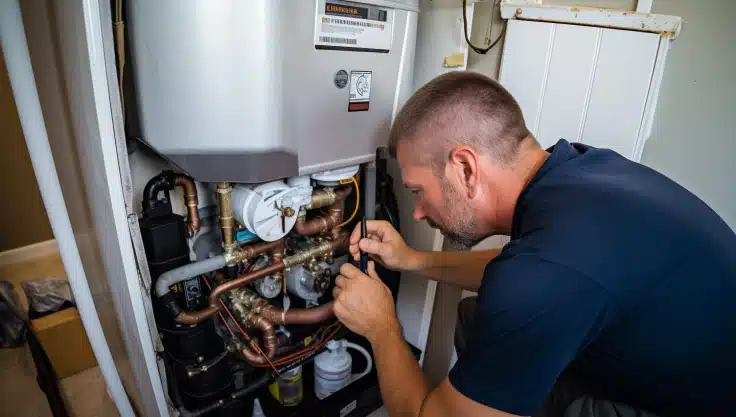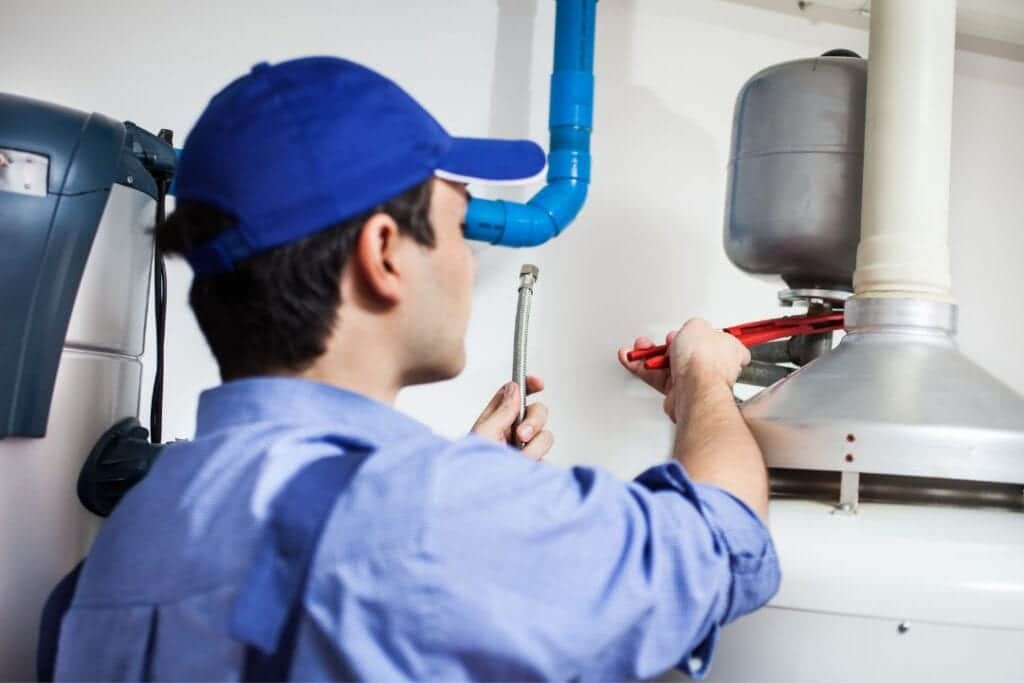As winter approaches, preparing your home becomes essential to avoid costly repairs and ensure comfort throughout the cold season. One critical aspect often overlooked is winterizing your hot water system. Properly winterizing your hot water system not only prevents potential damage from freezing temperatures but also helps maintain its efficiency and longevity. Firstly, start by insulating any exposed pipes leading to and from your hot water heater. This insulation can be found at most hardware stores and helps prevent heat loss, reducing energy consumption. Next, consider adjusting the temperature setting on your water heater to conserve energy while still maintaining a comfortable water temperature. Additionally, flushing your water heater to remove sediment buildup can improve its efficiency and prolong its lifespan. Lastly, if you have an outdoor hot water heater or piping, ensure they are adequately protected with insulated covers or heat tape to prevent freezing. By taking these proactive steps, you can ensure your hot water system remains in optimal condition throughout the winter months, saving you money and ensuring uninterrupted hot water supply when you need it most.
Preventive Maintenance Checklist for Winterizing Your Hot Water System

As winter approaches, preparing your hot water system is essential to avoid costly repairs and ensure uninterrupted hot water supply. Cold temperatures can strain your system, potentially leading to freezing pipes or reduced efficiency. Follow this preventive maintenance checklist to safeguard your hot water system and enjoy consistent performance throughout the winter months.
Inspect the Hot Water Tank
Start by inspecting your hot water tank for any signs of leaks, corrosion, or damage. Check around the base of the tank and the connections for moisture or rust. Addressing minor issues now can prevent major problems later.
Test Pressure Relief Valve
The pressure relief valve is crucial for maintaining safe pressure levels inside your hot water tank. Test it by lifting the lever and letting it snapback. This action should release a burst of water into the drain pipe. If the valve fails to operate correctly, it may need replacement by a qualified technician.
Check for Insulation
Inspect the insulation around your hot water pipes and tank. Proper insulation helps prevent heat loss and reduces the risk of pipes freezing during cold weather. Replace or add insulation where needed, especially in unheated areas like basements, crawl spaces, or attics.
Drain Sediment from the Tank
Over time, sediment can accumulate at the bottom of your hot water tank, reducing its efficiency and lifespan. Drain the tank to remove sediment buildup by following these steps: Turn off the power supply to the water heater. Connect a garden hose to the drain valve at the bottom of the tank. Open a hot water faucet elsewhere in the house to allow air into the tank. Open the drain valve and let the water drain completely. Close the drain valve and turn on the cold water supply to flush out any remaining sediment.
Inspect and Insulate Pipes
Check all hot water pipes for signs of wear, leaks, or cracks. Insulate exposed pipes with foam insulation sleeves or wrap them with heat tape to prevent freezing. Pay particular attention to pipes located in exterior walls, crawl spaces, or unheated areas.
Insulating Pipes and Tank: Protecting Your Hot Water System

As winter approaches, one of the most crucial steps in winterizing your hot water system is properly insulating both the pipes and the tank. Cold temperatures can cause pipes to freeze and potentially burst, leading to costly repairs and water damage. Insulation helps maintain water temperature, prevents heat loss, and ensures your hot water system operates efficiently throughout the cold season. Follow these steps to effectively insulate your hot water pipes and tank.
Assess Your Hot Water System
Start by assessing your hot water system to identify which pipes and the tank require insulation. Typically, you’ll want to insulate pipes in unheated areas such as basements, crawl spaces, and exterior walls. Check for any existing insulation that may be damaged or inadequate.
Gather Your Materials
Before you begin, gather the necessary materials: Foam pipe insulation sleeves or wrap Insulation blankets or jackets for the hot water tank Insulation tape or zip ties (if needed) Scissors or utility knife Gloves and safety goggles (to protect your hands and eyes)
Insulate Hot Water Pipes
Wrap foam insulation sleeves or insulation tape around exposed hot water pipes. Start at the water heater and work your way outward. Ensure the insulation fits snugly around the pipes without gaps. Use zip ties or insulation tape to secure the insulation in place, especially around elbows and joints.
Insulate Cold Water Pipes
While your focus is on hot water pipes, don’t forget about cold water pipes. Insulating these pipes can also prevent them from freezing and potentially causing disruptions in your plumbing system.
Insulate the Hot Water Tank
Wrap an insulation blanket or jacket around your hot water tank to reduce heat loss. These blankets are designed to fit around standard-size tanks and are made from materials that provide additional insulation. Follow the manufacturer’s instructions for installation to ensure proper coverage and effectiveness.
Year-Round Maintenance Tips for Your Hot Water System
Maintaining your hot water system year-round is essential for longevity and efficiency. Here are key points to keep in mind: Regular Inspections: Check for leaks, corrosion, and sediment buildup in your hot water tank. Temperature Settings: Set your water heater’s temperature to a safe and efficient level, around 120 degrees Fahrenheit. Drain Sediment: Periodically drain your hot water tank to remove sediment that can reduce efficiency. Inspect and Insulate Pipes: Ensure pipes are insulated to prevent heat loss and freezing in colder months.
Conclusion
Preparing your hot water system for winter is a crucial step in maintaining its efficiency and longevity. By following the steps outlined in this guide, you can ensure that your hot water system remains operational throughout the colder months, saving you from potential costly repairs and inconvenience. Remember to insulate pipes, check for leaks, adjust the thermostat if necessary, and schedule a professional maintenance check if you encounter any issues. Taking these proactive measures not only protects your investment but also ensures that you have reliable hot water when you need it most.
If you need further assistance or professional guidance on winterizing your hot water system, don’t hesitate to reach out to Mario’s Plumbing and Drainage. Located on the beautiful Sunshine Coast in Queensland, Australia, our team is dedicated to providing expert plumbing services tailored to your needs. You can contact us at 07 5479 6053 or visit our website for more information on how we can help you prepare your home for the winter season. Stay warm and worry-free with Mario’s Plumbing and Drainage at your service!


